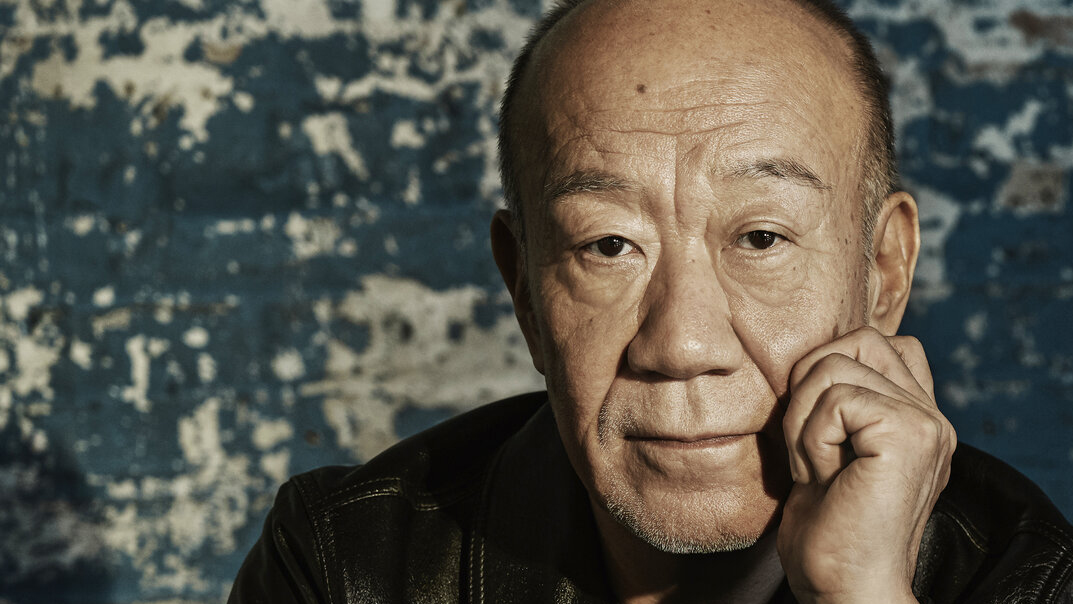My Neighbor Totoro, Kiki’s Delivery Service, Howl’s Moving Castle… Joe Hisaishi’s music is an integral part of Hayao Miyazaki’s enchanting animated films. For our Epiphany concert, Hisaishi himself arrives in front of the orchestra to conduct a suite from the film Spirited Away along with two of his pieces composed for the concert hall.
“You knock your head against a tofu cube and you get a bump.” In the third part of The East Land Symphony, soprano Olga Heikkilä gets to sing a poem inspired by a Japanese children's nonsense poem, whose absurd verses take you on a mystical journey through Tokyo.
Joe Hisaishi
Born in Nagano, Japan, Joe Hisaishi started his career as a contemporary music composer at Kunitachi College of Music. Since his first album, Information, in 1982, he has released nearly 40 solo albums.
Hisaishi is best known for his film scores, and especially those for ten films directed by Hayao Miyazaki. Now numbering over 80 in all, his scores have won him the unofficial title of “Japan’s John Williams”. Most of them are designed for Japanese audiences, but he nevertheless aims at a universal appeal since the films are seen by audiences the world over.
Joe Hisaishi also conducts. In 2004, he was appointed the first Music Director of the newly created World Dream Orchestra. From 2016 to 2018 he was Artistic Director of the Nagano City Arts Center, and in spring 2021 he took over as Principal Guest Conductor of the Japan Century Orchestra.
Olga Heikkilä
Finnish lyric soprano Olga Heikkilä is a frequent guest at opera houses and festivals across Europe and now makes her HPO debut in Hisaishi’s East Land Symphony. A laureate of the Lappeenranta and Kangasniemi competitions in Finland, the IVC’s Hertogenbosch in The Netherlands and the Klaudia Taev in Estonia, she has appeared not only in Finland but also at such prestigious venues abroad as the Berlin State Opera and Aix-en-Provence.
The music of Joe Hisaishi is, she says, highly familiar to a whole generation from the animation films directed by Hayao Miyazaki. Heikkilä has always been interested in languages, and will sing Tokyo Dance in Japanese and English. The words are, she says, fun, reeling off numbers and viewing Tokyo with the eyes of a child. The Prayer is sung in Latin. “So we go to the stars. So it was fated.”
Joe Hisaishi: DA-MA-SHI-E
“The title comes from M.C. Escher – not a particular picture of his, but very logical with some essence of humour – I totally agree with his style,” says Joe Hisaishi. Maurits Cornelis Escher (1898–1972) was a Dutch graphic artist who made mathematically inspired woodcuts, lithographs, and mezzotints. As a young man well versed in the works of composers from Bach to Boulez, Hisaishi said his eyes were first opened to the American minimalism of Glass, Reich and Adams in 1969, and ever since, his music has been characterised by slow, gradual shifts of harmony. DA-MA--SHI-E is structured in eight different phrases born from the first violin motifs at the very beginning. The brass instruments change the colour of the entire piece by hitting very strong notes. In the last half, the brass chorales join, playing the eight motifs and making the ending joyful and positive.
Originally scored for small ensemble, DA-MA-SHI-E was premiered in 1996 and can be heard on the CD Minima_Rhythm – the culmination of Hisaishi’s minimalism up to that time – released in 2009.
Spirited Away Suite
Spirited Away (2001) tells the story of a petulant 10-year-old girl called Chihiro who gets separated from her parents and is ‘spirited away’ to another world. All of a sudden, nothing is the same or as it seems. She is given a new name and a job, and in order to break free, she has to get her old name back by performing the most peculiar tasks.
The film is Hasaishi’s best-known collaboration with film director Hayao Miyazaki. It won the Academy Award for Best Animated Feature in 2003 and many critics have voted it one of the best films of the present millennium. Hisaishi arranged the music from the film as the Spirited Away Suite in nine scenes for a tour by the World Dream Orchestra conducted by him in 2018.
Joe Hisaishi: The East Land Symphony
The East Land Symphony by Joe Hisaishi was inspired by the devastating earthquake that hit Japan in 2011. The title refers both to Japan as a country in the East and to the Tōhoku Region in the east of Japan. “As mankind, where do we go now?” he asks in the aftermath of the disaster. “How do we live in such a world of chaos?”
The symphony’s first movement is an explosive mixture of serial music and minimalist elements, resulting in the dissonance embodied in the whole work. The second movement, Air, has an insistent beat: “like the flow of the atmosphere. In an abstract way, it feels like we have resisted the progression of time.” The third movement, Tokyo Dance, satirises Japan’s isolation at the time. “All that matters are myself and my surroundings; forget about the world.” The lyrics in English mixed with Japanese were written by his daughter Mai. Rhapsody of Trinity is a divertimento full of black humour and satire, and the closing movement, The Prayer, is simple and uses the least amount of sound. The lyrics are from a dictionary of Latin proverbs, and the chorale at the end is from Bach’s St. Matthew Passion running through Hisaishi’s head as he wrote the symphony.

